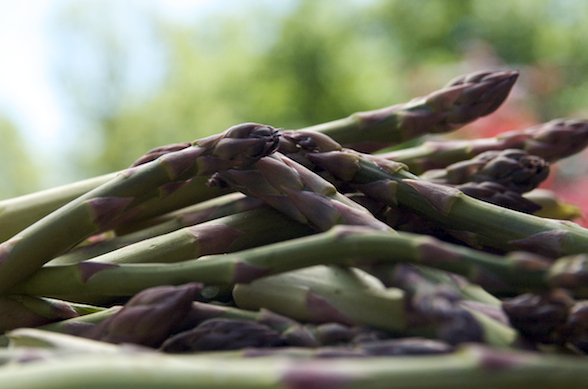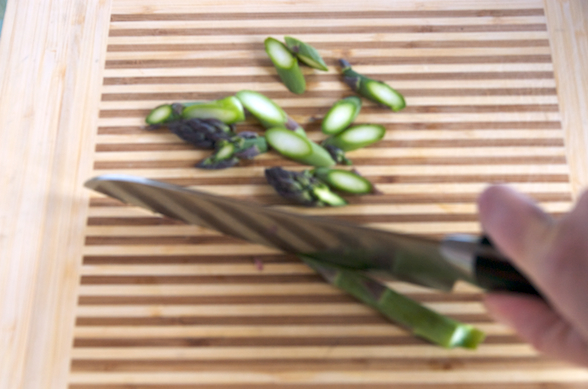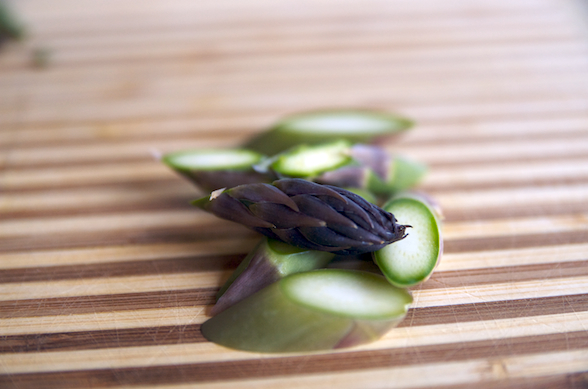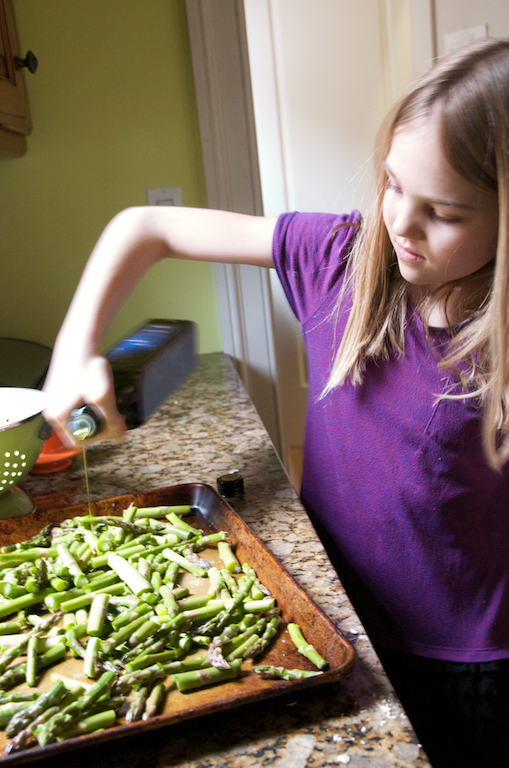Produce Primer: Asparagus
Posted by Jill | May 3, 2010 | Filed under: Home, Ingredients
Asparagus is the culinary sentinel of spring. The fresh asparagus available during April and May is the best argument for eating seasonally. If you’ve been eating asparagus from South America in February and get a taste of the fresh local stuff from the farmer’s market, they hardly seem like the same vegetable.
Because of its versatility, you can eat it every night of the week, prepared a little differently, so that you never get sick of it. By the time you start to get a little weary of it, the season will be over. Below are four different very basic methods for preparing asparagus. Play with these ideas to suit your own tastes.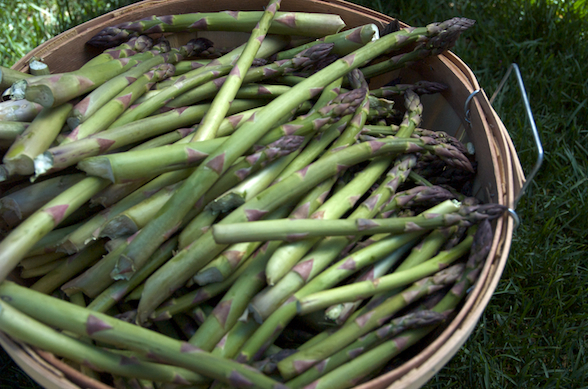
Asparagus 101
White and green asparagus are the same plant. White asparagus is created by mounding dirt or some other light-depriving covering on the growing asparagus stalks to prevent them from producing chlorophyll. White asparagus has a more delicate flavor than green.
Choose stalks with firm, compact heads on stems that look moist and fresh. Fat or skinny? Who cares? Its just a difference of taste. Just try to cook spears that are approximately the same size simultaneously.
Store them covered in the refrigerator for no more than a week- you’ll notice the heads getting squishy as they age. Grasp the spear just below the head with one hand and at the cut end with the other and bend it. It will snap at the point where it turns from woody to more spongy. Peel them if their skins seem thick or you’re using the white variety, but it’s not necessary for green asparagus.
Flavors that like to get together with asparagus
Asparagus is good enough on its own, but can reveal itself in new and interesting ways when finished with complimentary flavors.
- Add minced garlic (the young garlic available at the market this time of year is delicate and especially nice) or shallots to the oil in a sauté pan for about 1 minute before adding the asparagus pieces. Just watch that you don’t burn these aromatics.
- Just before serving, finish it with sea salt or smoked salt, a little fine lemon zest, red pepper flakes, fresh parmesan, toasted sesame seeds, chopped and crumbled hard-boiled eggs
- Feel like getting a little fancy? Finish it with compound butter. Say what? That’s just butter that has a little flavor thoroughly mixed in with it. How much? Taste it. Try curry, dried porcini mushroom powder (grind dried porcinis in a coffee grinder), herbs, citrus zest or canned chipotle chilis. Let your creativity come up with something great- or maybe not so great, but then you’ll have learned something, right?
Saute it
Bend the woody part off the asparagus. Cut the spear on the bias into ¼” thicknesses. Do this by holding the spear at a 45-degree angle to your knife. Why? Because a) its pretty, b) it keeps the pieces from rolling all around the pan and c)it gives a much larger flat cut surface that will brown more readily.
Heat a sauté pan (sloped sides) or skillet (straight sides) to medium-high heat. Add enough olive oil to just cover the bottom of the pan. When the oil is hot (but not smoking), add the asparagus pieces in a single layer. If you have more than a single layer, do them in a separate batch. Salt them lightly and leave them in place for about 1 ½ minutes and then toss them in the pan. Cook until desired tenderness.
Grill it
Method 1: Brush or toss your spears with enough extra-virgin olive oil to give them a sheen. Sprinkle with kosher salt. Put them above medium heat on the grill, turning once, until done. Make it interesting by binding 3-4 spears with a piece of prosciutto. Secure prosciutto with a toothpick, removed for serving. Recommended only for thicker spears.
Method 2: Wrap asparagus spears in aluminum foil. Pierce foil all over with a knife. Place on high heat on the grill. The asparagus will steam in its own juices but will also pick up the signature smokiness of the grill. Tender, thin spears need this treatment because their tips tend to dry out quickly over direct heat.
Roast it
Toss whole or trimmed and peeled (if desired) spears in extra-virgin olive oil to give them a light sheen. Sprinkle with kosher salt. Place on rimmed sheet pan in a single layer. Roast at 450-degrees until done, approximately 10-15 minutes.
Steam/braise it
Obviously, you can just throw the spears in a steamer basket above boiling water. More interesting, though, is to steam/braise them in a skillet. Place spears (cut or uncut) in a skillet with a thin layer of liquid in it. Choose water, stock, dilute lemon juice, soy sauce- or whatever else sounds good (just to be clear though, we’re talking about watery, liquidy substances, not oil). You don’t actually want them to boil in the liquid, rather just be sort of resting on the liquid layer. Cover tightly, turn on heat to low. The liquid on the bottom of the pan will mostly evaporate and will become the steam that will cook the spears. Cool, eh? Kinda steaming, kinda braising.

